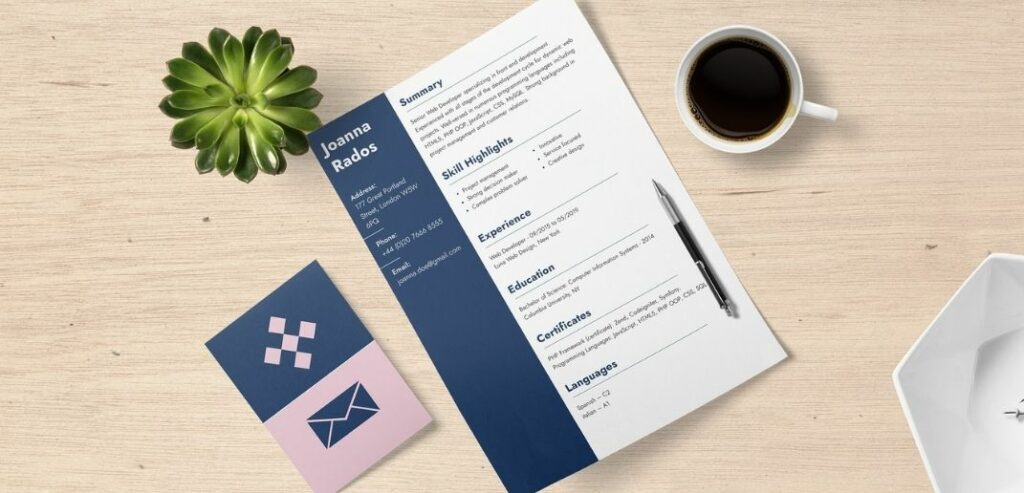
Time management: how to manage time in the recruitment process
Long video calls, endless meetings and then emails to answer, not forgetting everything outside the office. Managing your time at work, as well as on other occasions, is something you have to learn to do to be really efficient.
In this article we will try to give you some useful tips on how to manage your recruitment time and some practical tools to do so.
First, however, let’s try to understand what time management is and why this topic deserves to be treated separately.
What is time management

Time management is a process of planning one’s time. It helps to improve the company’s activities, to better manage people’s working time with the aim of increasing their efficiency and productivity, but also to make them feel better and not constantly under pressure.
This is why this process cannot start without a careful analysis of how time is spent. First of all, it is essential to understand how the different activities are carried out: only then can you know what is wrong with your organisational model.
For example, do you realise that although meetings are scheduled to last one hour, they always run over? In this case, you need to understand why this happens and what leads people not to make the best use of the time allocated to talk about a certain topic.
Did they misjudge the time needed? Do they tend to get lost in a lot of jibber jabber at the beginning and only address the most important issues afterwards? Or do those who have to participate arrive late, thus delaying the whole thing?
If this happens only once, you can accept it, but if it is the norm, it goes without saying that there is no good time management. If this is the norm, it goes without saying that there is no good time management, because this can have a knock-on effect not only on those attending the meeting, but also on the teams to which they belong and on their work.
This is obviously just a general example, but it is certainly a good starting point for analysing the issue. Let’s see in detail what happens to the recruiter and especially to the recruiting process he/she implements.
How to optimise and save time in the recruiting process
There are a number of techniques and strategies to optimise time which obviously apply to recruiters, as well as to anyone working under pressure.
Some people use the Eisenhower matrix to better manage their time, which consists of analysing their activities and dividing them according to their characteristics into 4 quadrants:
- Quadrant 1: Important and urgent: here you should put those tasks that you absolutely have to do and that you cannot delegate. For example: interviews for a vacancy, phone calls to selected candidates, etc…
- Quadrant 2: Important but not urgent: here you put all the activities that are important but not as urgent as the others. For example: defining new recruitment strategies, attending a social media management course (you can also do these at another time).
- Quadrant 3: Urgent but not important: these can be meetings you have been included in but which you might not attend or delegate someone to take your place. Or answering an e-mail from a colleague who is particularly anxious and expects an answer, but which, if delayed for a few hours or days, is not particularly ‘blocking’.
- Quadrant 4: Non-urgent and unimportant: here are all the superfluous activities that you can do without and that distract you. Such as, for example, looking at your LinkedIn page all the time, even if you are not the one managing it.
In addition to the matrix, here are some other useful tips.
Don’t measure your time by achievements but by activities performed

This is a mistake that is often made, one feels satisfied only if one has succeeded in what one had set out to do. Acting in this way is not ‘healthy’, while it is essential to measure productivity in a more intelligent way.
Instead of saying that you have to make 50 phone calls in a day, it’s better to make 20 calls that are profitable, without focusing on quantity.
Don’t get trapped by the to-do list
We often make a to-do list which, when completed, we tick off with great satisfaction. Those things we haven’t done, on the other hand, we drag around for days like a boulder.
However, if you think about it, not all days are the same and instead of imposing ourselves to do those certain things and in that order, we can either invert the list or do something different because perhaps at that moment it is what makes us feel better.
For example: you are having a bad day and don’t want to talk to anyone? Start by doing an activity such as writing a job posting instead of having a team meeting straight away: the urge will come.
Tackle complex tasks in the morning
If you are not a person with an owl biorhythm, i.e. who prefers night to morning, the advice is to tackle complex tasks when you are fresher. If you have started the morning well, with a nice breakfast or a sporting activity, you can get a lot done before you feel any tiredness. Moreover, in the morning, crises have not yet broken out, there are fewer phone calls and people are calmer. Take advantage of it.
Score your candidates
To avoid wasting time, it is important to make a sort of “ranking” of the candidates, which does not mean that you do not consider their CV and their qualities, but that based on how they react you define whether they are interested or not, as well as whether they have the necessary characteristics for the position.
Ask yourself if they are immediately available, for example, or open to new markets, if when you talk about the job opportunity they are enthusiastic, if they listen and so on.
With ATS software like Inrecruiting, you can keep track of these opinions and find the information every time you do a search of a certain type and ‘query’ the database.
Time management for the recruiter: skill or obstacle?
Having said that, is time management for the recruiter a skill or an obstacle? Definitely the first, it is in fact a skill that, moreover, can be acquired. Knowing how to plan your days in the best possible way brings numerous advantages.
Here are some of them:
- you get what you want faster
- you lose less time and avoid friction and problems
- you feel more energetic and have more free time.
- you feel more fulfilled and do more tasks in less time
- you feel less stressed
As far as the company is concerned, this leads not only to greater productivity and efficiency, but also to a more favourable company climate, given the important role played by HR. But that’s not all: if you are better organised, you have more time to watch inspiring videos (e.g. TED videos) to learn about new HR trends, read LinkedIn posts, articles and so on.
Useful tips to manage your hiring time better
And now for some practical tips to help you manage your hiring time.
Adopt digitised and centralised systems such as ATS

As we said before, adopting an Applicant Tracking System for recruitment allows you to automate many of those processes that usually take a huge amount of time. Such as? For example, collecting CVs, screening, but also setting appointments and remembering when they are. Not to mention the creation of the Careers page which, with software such as Inrecruiting, can be done in no time at all, customising it as you see fit.
Think also of all the times when you have written an ad and have to publish it manually everywhere: thanks to multiposting, you only need a few clicks to spread the job ads. These are of course only a few of the features of Inrecruiting; the list could go on with automatic feedback, video interviews etc…
Automate tasks with Artificial Intelligence
There are those who fear it, yet Artificial Intelligence does not replace the recruiter at all, but actually helps him.
Faster application processes, automatic completion of application forms, fast screening activities (even in the case of a large number of applications), CV parsing (i.e. the extraction and conversion of unstructured data on a CV into structured information), semantic search engines, matching systems: these are just some of the benefits offered by Artificial Intelligence thanks to INDA.
This allows you to make a more objective selection, perform targeted searches and much more.
Adopt a more agile approach to the recruiting process
Have you ever heard of agile recruiting? Borrowed from the world of IT, agile recruiting allows you to pay more attention to the organisation and optimisation of the activity, to plan the flows, to value and involve people (both subjects and clients), to identify priorities and much more.
A considerable help comes from the Kanban board of Inrecruiting for which the Kanban method is adapted to recruitment.
Basically it is a notice board (blackboard) divided into columns, each of which is dedicated to a specific project or phase of the recruitment process. In this way, you have a panoramic view of what you are doing and you are always up-to-date on the work. Each task is given a card, which can be moved to another column depending on the progress of the job.
The Kanban Board allows recruiters to structure the entire application pipeline and display candidate cards under their specific category. Each board can then be dragged and dropped within the Hiring Pipeline and easily moved between categories. That is, if you have already contacted a candidate and had the first interview you can move them to the appropriate column, idem if they are being assessed and so on.
Monitor the progress of processes in the hiring pipeline
ATS software then allows you to better manage the roles and responsibilities of teams within a recruitment process. It also allows you to see where you are, what has been done and what still needs to be done.
Schedule interviews and video interviews
As mentioned above, with the ATS software, you have the possibility to plan video interviews much more effectively, thanks to Meetin, as well as live interviews and matching between the commitments of the people in your team and the candidates.
Communicate quickly with candidates
To improve communication with active and passive candidates and stay in touch with them both the first time you meet them and afterwards, what could be better than a newsletter or an SMS?
Thanks to Sendin, a new tool integrated into ATS Inrecruiting, you will be able to send massive communications to candidates and manage them in an automated way. This will allow you to plan your campaigns in the best possible way and avoid the classic “bottlenecks” that result from slow communication.
These are all ways, as you can see, to manage your time better and make planning less stressful, but rather a real support.
Want to know more about Inrecruiting?

Giornalista, content strategist e formatrice
Siciliana trapiantata a Milano, città che ama molto come la sua terra. Giornalista, SEO copywriter, formatrice e amante del live tweeting, scrive per varie testate e blog aziendali di lavoro, risorse umane e tanto altro.
Ha scritto nel 2020 il suo primo libro “Scrivere per informare” insieme a Riccardo Esposito, edito da Flacowski e nel 2021 altri due: “L’impresa come media” e “Content marketing per eventi“.
Ama il mare, la bici, la pizza, i libri, le chiacchiere all’aperto.